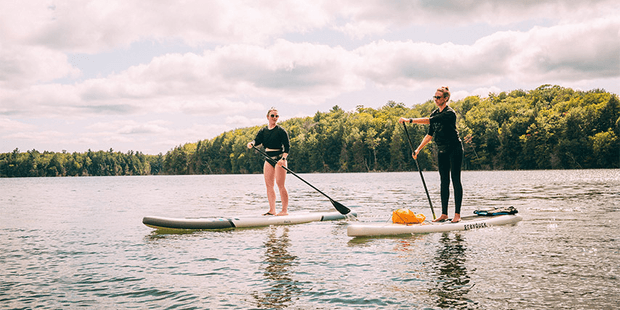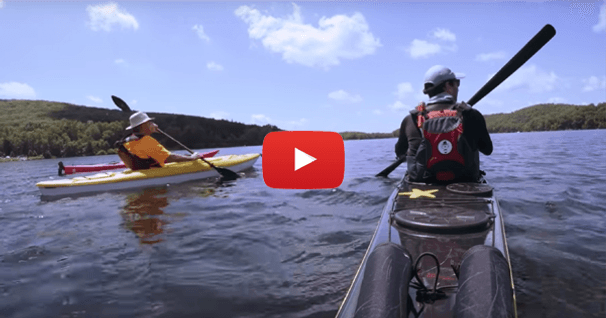Staying Safe While Stand Up Paddling
One of the great things about stand-up paddle boarding is that it can be a remarkably safe and user-friendly activity, but it's important to understand that because you're on the water, when things do go wrong situations can become very serious, very fast, and so in this video we're going to look at a few important ways to keep your stand up paddling experience as safe as possible.
Location
First off, you need to choose an appropriate paddling location for your skill level. The ideal stand-up paddle boarding environment has protection from wind and waves, good access for launching and landing, plenty of places to go ashore, and minimal boat traffic. Look for calm bays or quiet lakes and river ways without noticeable current. As a general rule, if you venture into water that isn't protected from wind and waves, and or if you travel further from shore than you can comfortably swim, you dramatically increase your risk.
Life Jacket
Secondly, you need to wear a life jacket when you're paddling. In fact, paddle boards are considered a vessel by the U.S. Coast Guard, which means that you need to have a life jacket and whistle on hand if you're outside a swimming or surfing area. If you're not a strong swimmer, or you can't swim, it's definitely a great idea to wear an inherently buoyant life jacket. There are some great paddle specific models on the market that are comfortable to wear and won't restrict your movement. If you are a swimmer, you can consider an inflatable life jacket. The most popular inflatable life jackets for stand up paddling are belt packs, which are worn around your waist, but they're also available as vests.
If you do use a belt pack, they're best worn in front so they can be easily and quickly inflated if needed. The third way to keep your SUP experience safe it is to wear a leash. In fact, it can be argued that the board is your most important piece of safety gear.
Leash
This is why a leash is such a key piece of safety equipment, because it connects you to your board with a strap. Unless you're specifically paddling whitewater rapids, or moving water rivers, where your leash can become snagged on a rock, a branch or even on shore, it's very important to wear your leash, because if you ever do fall off, it's amazing how quickly wind and current can separate you from your board.
Getting Back on Your Board
The fourth and final stand up paddling safety tip is to practice getting back onto your board from the water, before you need to do it for real. If you can't confidently get back on your board from the water, then it only makes sense that you wear full size jacket, and that you stay close enough to shore to swim in if you need to. So there you have it, four easy ways to dramatically improve your safety on the water.
~Shop Grey Duck SUP~
We make being on the water more fun, accessible, and enjoyable. Come with us on this journey, you won’t be disappointed.
Related Articles
By changing how you edge and balance your boat you can increase your stability and adaptability. Using…
People generally think paddling a longer kayak will make them go straighter, but with proper technique…
Whether you were new to paddling in 2018 or you're an experienced paddler, you can never stop learning.…
As a professional educator and a kayaking instructor I must begin this article by saying: I believe…




